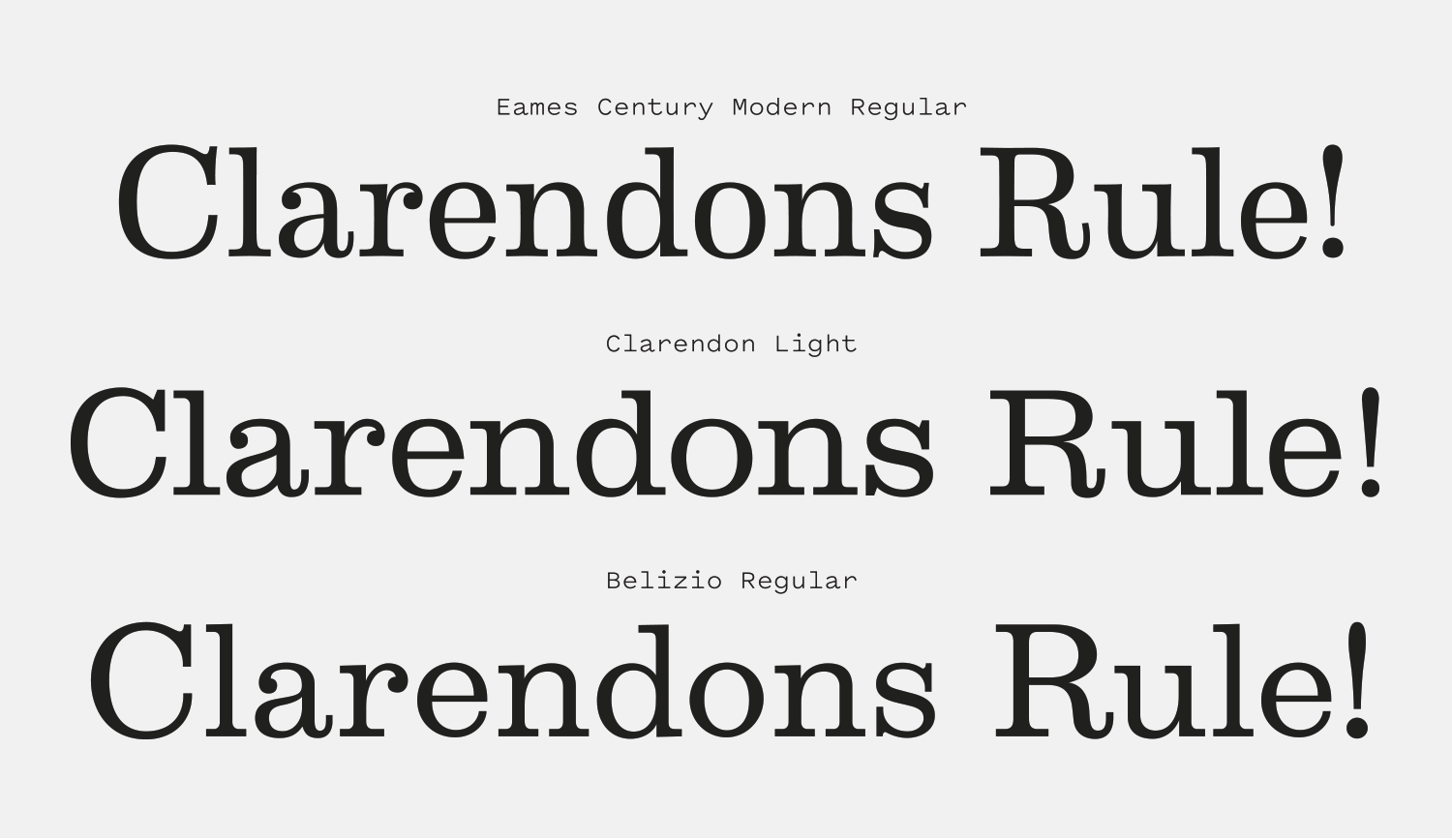Eames Century Modern is a beautiful typeface that blends two major genres of serif: the Clarendon and the Scotch. It’s an exuberant design, full of warmth and oddball design details. It shares the same character of the famous couple from which it derives its name, and because of that it is a monumental task to find in-use examples of this font that aren’t either showcase specimens for the font itself, or works related to Charles and Ray Eames. Designs that are this overflowing with personality risk limiting their potential use-cases, but you shouldn’t confuse Eames’ bright personality for shallowness. This is a comically robust family, with 18 weights, multiple number sets and a set of borders to boot. If you need something to really lean into the retro stylings of the mid 20th-century, Eames has you covered.
Eames Century Modern in use. Typeface Design: Erik van Blokland & House Industries Typeface Direction: Ken Barber & Andy Cruz Typeface Mastering: Tal. 'Find My Font' is an easy to use application for identifying fonts in digital images.
But it’s also capable of a more restrained presence—this font can do more than playful if you ask it to. Eames is drawn with a “flex” to its strokes—the flat sides of serifs bend inward, giving the illusion that they’ve been pressed into paper. This subtle imperfection across the family softens the massive slab serifs and prevents the design from feeling imposing in its boldest weights. Those heavy weights, the stencil, and the special number sets are graphic and crisp, aching to be used with bright, punchy colors. This is a typeface that makes you smile, and I think it says a lot about how much fun Eames is to use that there are so many projects out there that only exist to give designers an excuse to play with it.
We’ll look at some of those as well as more “practical” uses of Eames Century Modern in this review. Historic Inspiration House’s for Eames Century modern is full of images of various Eames-related piece of typography that influenced the creation of the typeface.
Thick Antique slab-serifs, Didone italics and Clarendons all make appearances, and you can see bits of their influence throughout Eames Century Modern. The typeface is first and foremost a Clarendon: a slab serif with smooth brackets (this style was also referred to as “Ionic” at varying points throughout history). William Caslon’s Double Pica Ionic in 1842 was the first true representation of this style, and in 1845 the name “Clarendon” was registered as a trademark by the Fann Street Foundry (the first typeface to ever fall under copyright protection!). Nevertheless, the name and the style was swallowed up by most other type makers and spread from the UK to the US and abroad. Clarendons serve as the middle point between the bold voice of an Antique and the more fragile state of a Roman serif. Richard & Miller’s Ionic № 2 is an excellent example and it’s clear to see Eames is following the same path. Nº05 Eames Century Modern (top) compared to Two Clarendons, Clarendon (middle) and Belizio (bottom).
Tom Clancy's Splinter Cell: Double Agent is associate action-adventure concealment game, developed and printed by Ubisoft. The series, supported by Yankee author Tom Clancy, follows the character Sam Fisher, an associate agent used by a black-ops division of the National Security Agency, dubbed Third Echelon. The undercover agent was discharged for the GameCube, PlayStation two, Xbox and Xbox. Splinter cell double agent highly compressed pc game. Tom Clancy’s Splinter Cell Double Agent [www.pocketgames.ir].part1.rar. GTA SAN ANDREAS is a very famous game by Rockstar North. Cell: Double.

Clarendons are wide-set, have slab serifs that grow thicker as their weight increases, and tend to have details like ball terminals that give them an interesting interplay between squares and circles. Eames toes closer to Roman-style traits than Clarendon or Belizio, as you can see the in more relaxed presence it has compared to the others with their flat edges. Eames has greater thick-to-thin contrast (most noticable in the exclmation point!) and a narrower stance, which puts more emphasis on its ball terminal details (look at the “a” and “r”) and the aforementioned “flex” in its straight lines give it a worn-in feeling. Eames certainly feels more “of a time” compared to its cohorts, having the perspective to look back at aesthetic trends across typeface usage from the era it’s trying to emulate and emphasize ideas pulled from multiple genres. Another detail that will become important in its italics is how pronounced the curling tail on the “a” is. It’s tucked in tighter to the body of the glyph but extends higher up, and doesn’t terminate flatly parallel with the baseline as the other designs do.
Most Viewed Pages
- Soal Uas Bahasa Inggris Kelas 6 Sd Semester 1 Final Exam
- At89c2051 Programming Software
- Savage Arms Model 72 Serial Number Lookup
- Free Download Video Clip Avenged Sevenfold Mia
- Spectraview 2 Serial Numbers
- Download Pocket Monsters Green Version J V10
- Cara Crack Software Hwid Ban
- Vectormagicdesktopeditionv1 15 Keygen Fffexe
- Protokol Obucheniya Po Okazaniyu Pervoj Medicinskoj Pomoschi Obrazec
- K On Houkago Live English Patch Iso
- Toronto Gothic Font Free
- Neodownloader 2 9 5 Keygen Software